- Home
- Nuisance Trapping
Nuisance Trapping
This post may contain affiliate links so I earn a commission.
Why has nuisance trapping become a full time job and profitable business for many people?
As the world economy grows and the "urban sprawl" continues many animals are calling your house their new home.
Due to urban growth and the removal of habitat, many animals which once lived in the forest are now living in attics, barns and other man made structures.
While most animals will move to where their natural habitat exists, some animals do not and they actually thrive in an urban setting.
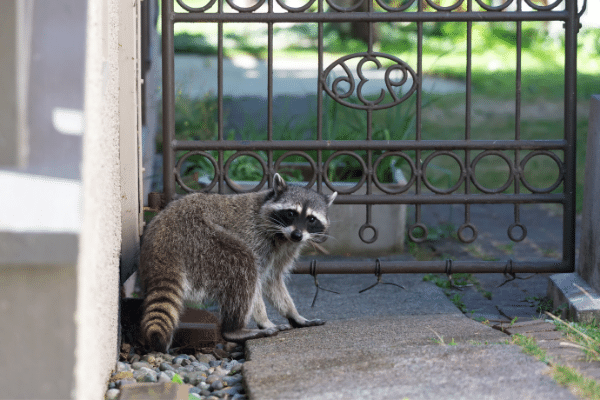
For animals like the raccoon or opossum, a man made structure provides a great place to live and the local dumpster has an endless supply of delicious food.
These animals become a problem when they start chewing wires, destroying shingles, ripping holes in soffits and potentially spreading unwanted disease.
Remove Them Yourself
Calling a nuisance trapping professional can be expensive.
Plus, you have to live with the unwanted animal or pest until the professional arrives for your scheduled appointment.
There's nothing more frustrating than discovering you have a problem with an unwanted animal and then being informed you have to live with it for a week before a professional can arrive.
If you're like me, once the unwanted pest or animal invades your home you wanted gone immediately!
What if you had the tools and knowledge to remove the unwanted pest yourself?
Good news!
You can.....and it's not that hard.
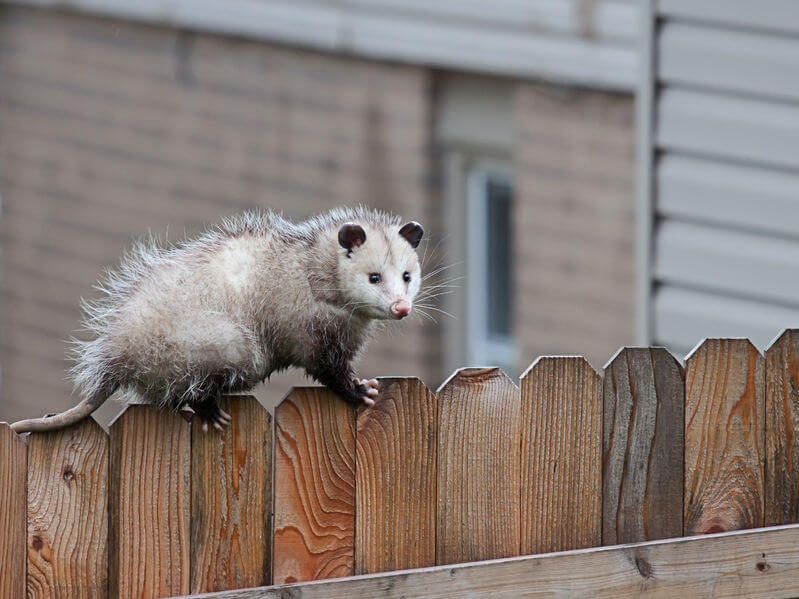
For many people, the thought of killing an animal is unacceptable.
Did you know that many pests and unwanted animals can be successfully trapped an relocated without harm?
That's right, many animals that are trapped are simply relocated to another area where they can thrive without interfering with our daily lives.
Some states have strict rules about relocating certain animals.
Always make sure to check your local regulations before choosing to relocate anything.
Look at the list below to see do it yourself techniques for trapping a variety of unwanted pests and nuisance animals.
Clicking on the link will give you detailed instructions to remove them yourself saving you time and money.
Nuisance Trapping Armadillos
Armadillos can cause a lot of damage to your yard as they burrow and search for food.
They're mainly nocturnal and while they search for their favorite foods, like grubs and worms, they leave behind several small 3 to 5 inch holes.
Their burrowing is also a big problem because they'll cause damage to your homes foundation, air conditioning units and other structures when they dig underneath them to create a burrow.
Trapping armadillos is one of the easiest ways to get rid of them.
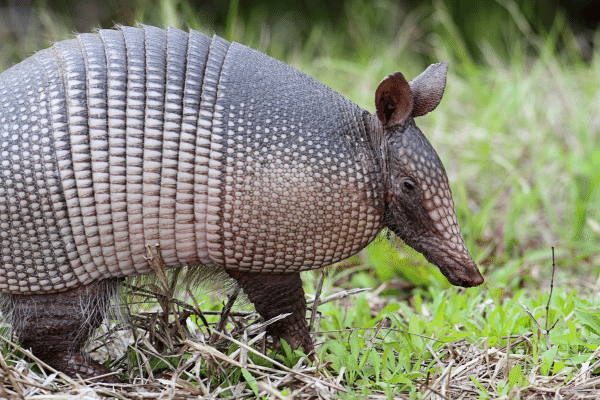
By setting up a funnel system and using a live trap, you don't need to use any specialized bait and you'll typically catch the armadillo within a night or two.
Along with trapping, you can also try armadillo repellents like ammonia and moth balls around your lawn or homes foundation.
Armadillos are very sensitive to strong odors and although these repellents don't work as well as traps, they can definitely help.
Nuisance Trapping Chipmunks
Watching a chipmunk in your backyard can be fun and entertaining, but chipmunks can quickly become a bothersome pest when they burrow under your homes foundation, sidewalk, or dig up your flower bed to eat seeds or bulbs.
There are 25 different species of chipmunks found in the United States, but the Eastern chipmunk and Western chipmunk are the most common.
Using repellents to keep chipmunks away from your home or bird feeders do not work very well, so trapping chipmunks is the best way to control them.
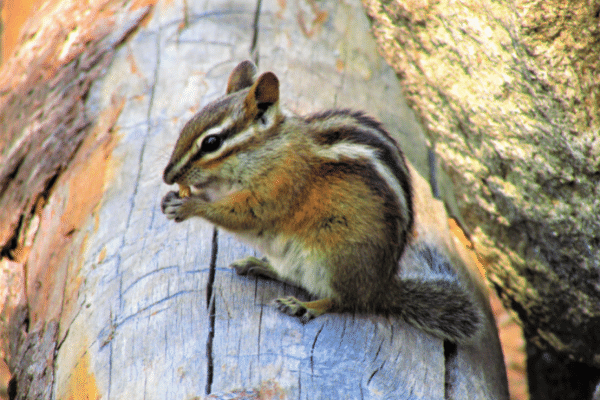
Using a live trap is the easiest way to remove them because the traps are easy to use and it gives you the opportunity to relocate the chipmunk if needed.
Another option is to set a rat trap baited with peanut butter and bird seed.
Rat traps are cheap, and you can set several of them around your yard to quickly eliminated a bothersome chipmunk.
Nuisance Trapping Feral Cats
Feral cats are becoming a huge problem throughout the United States.
Parks, universities and neighborhoods are all experiencing a rise in wild, non-domesticated cats.
Since feral cats have grown up with little or no human interaction, they generally do not respond well to living indoors when you attempt to rescue them.
They would rather live outdoors in their natural environment.
So what can you do to help control the wild cat population?
Most Humane Societies or animal shelters offer free neutering or spaying for people who are trapping feral cats and bringing them in to help control the population.
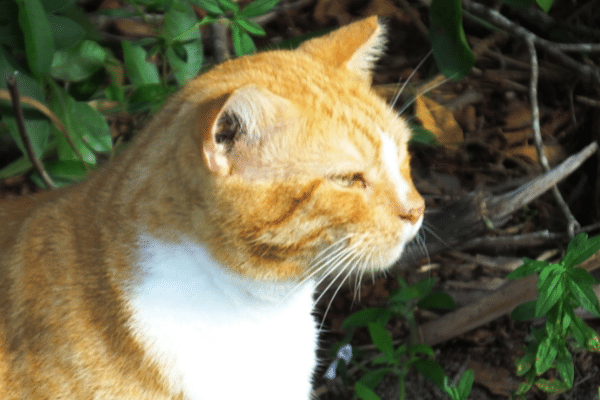
Then, after the cat is neutered or spayed, you can release the cat back into the outdoor environment it knows and loves.
The easiest way to trap a feral cat is to use a live trap baited with cat food or tuna fish.
A 4th or 5th generation feral cat is pretty scared of human contact, so the live trap might be alarming to them at first.
Placing a burlap bag or brush over the live trap can help conceal the trap, which also appeals to the cats natural desire to enter dark secluded places that make them feel safe.
Nuisance Trapping Groundhogs
Although groundhog is their official name, many people refer to them as woodchucks or even whistle-pigs due to their ability to create a high pitched whistle to warn others of danger.
Just like a lot of other animals on our nuisance trapping list, groundhogs love to burrow.
Unfortunately, these burrows are very destructive.
Growing up, we would always have groundhogs attempting to burrow under our above ground pool, causing a lot of damage if we didn't do something to control the population.
Groundhogs are always on the lookout for danger which makes shooting them with a small caliber rifle really hard.
Trapping groundhogs is the easiest and most effective way to get rid of them.
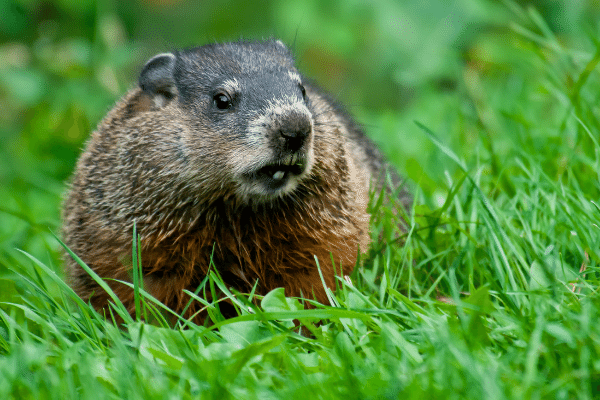
When choosing a trap you have a couple of options.
You use a conibear or body grip trap such as a #160 or #220, but you need to consider the possibility of catching a non-targeted species like a dog or cat.
To keep things simple, a live trap is a safe and effective trap choice for groundhogs.
Cantaloupe, cabbage, apples, fresh peas or lettuce all work great for bait in your live trap.
You don't have to overload the trap with bait, but groundhogs seem to prefer a lot of bait in the trap as opposed to just one slice of apple or cantaloupe.
Nuisance Trapping Opossum
Although they might resemble a furry rat, the opossum is North America's only marsupial.
While other nuisance pests like rabbits or squirrels may appear cute and cuddly, the opossum isn't the prettiest animal you'll encounter.
With its rat like tail and tendency to show its teeth when threatened, the opossum usually isn't loved by homeowners.
However, even though they might get into your garbage or dig a burrow under your barn, opossums will eat a lot of unwanted pests like mice, cockroaches and even ticks in your lawn.
If you have an opossum living in your home or attic, they probably entered looking for food.
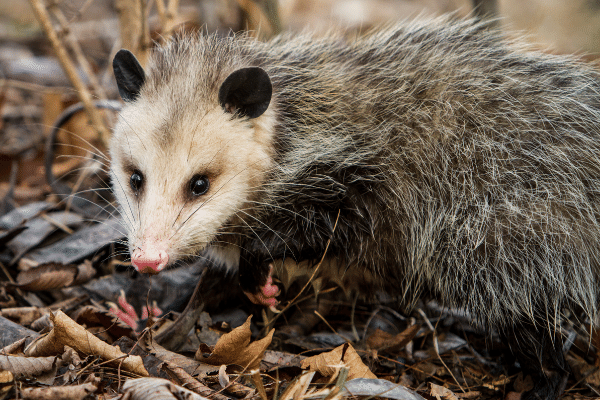
Keeping a tight lid on your garbage cans and making sure you don't have pet food laying around will help keep opossums out of your home or garage.
Trapping opossum inside your barn or attic is the easiest way to get rid of them.
A live trap baited with cat food, or just about any food scraps you have in your refrigerator will work.
Then, once it's trapped you can relocate the animal to a new location, away from your home.
Nuisance Trapping Pigeons
Pigeons have adapted really well to urban environments.
They can quickly gather by the 100's and damage buildings, roofs and other structures.
The first step to keeping your property pigeon free is taking some preventative measures to deter them, and not make your property look so inviting.
Keep your trash picked up and a lid on your garage container so the pigeons don't have an easy meal.
You can also use scare tactics to keep pigeons away, like a fake owl or hawk.
Pigeons won't land near these predatory birds and if you tie the fake owl or hawk on a string and allow it to dangle in the wind, it will work a lot better than a stationary object.
Bird spikes are another easy solution to get rid of pigeons.
When placed on your roof, they make it very unpleasant for the birds to roost on, which will cause them to find somewhere else to land.
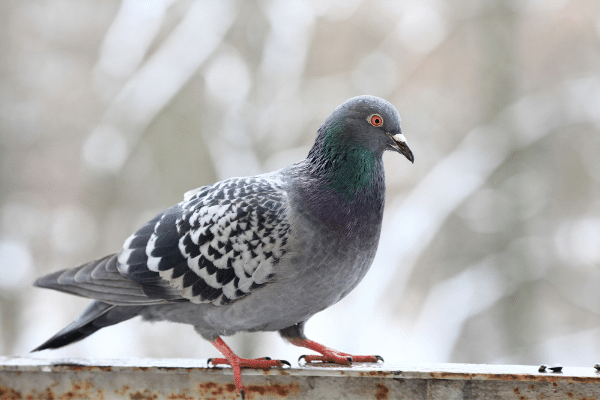
Trapping pigeons can easily be done with a pigeon trap.
They're basically a big cage trap with a one-way door that allows the birds to enter the trap, but not leave.
Pigeon traps can be used to catch a single bird, or multiple birds at one time.
Pigeon's are pretty intelligent birds though, so you'll want to make sure the pigeons feel comfortable around the trap before you actually set it and trap the birds.
Start by slowly feeding the birds with cracked corn in an area where you plan on setting the trap.
Once the birds have become used to feeding in a certain spot for a few days, place the trap near the feeding site but don't set it.
Allow the birds to feed near the trap until they no longer feel threatened by it, then bait the trap with cracked corn and set the trap.
Nuisance Trapping Pocket Gophers
Pocket gophers are a burrowing rodent that spends nearly its whole life underground.
They plague many homeowners because as they burrow underground in search of food, they leave behind mounds of dirt in your lawn.
These mounds of dirt will interfere with mowing equipment and kill the grass, while the underground tunnels can interfere with irrigation.
Pocket gophers are different than moles, and the easiest way to determine what you're dealing with is by looking at the mound of dirt left behind in your lawn.
Pocket gophers create a kidney shaped mound of dirt with a dirt plug in the middle.
The tunnel system runs underneath the surface and you generally will not see any raised tunnels in your lawn, just the mounds of dirt.
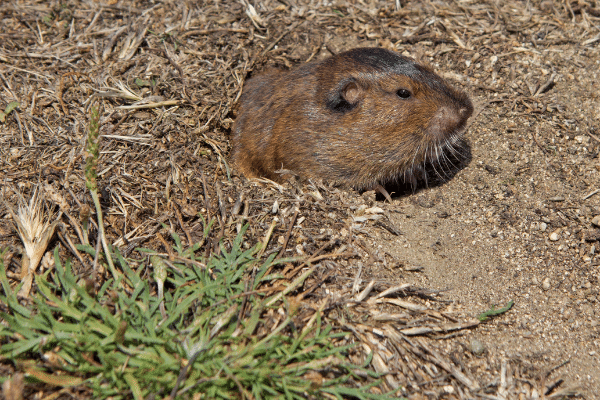
A mole will leave behind a round shaped dirt hill and you'll see multiple raised tunnels throughout your lawn.
Trapping pocket gophers is the fastest and easiest way to get rid of them.
The best way to trap them is by purchasing 2 or 3 high quality pocket gopher traps.
By using at least 2 traps you can place them back to back, which allows you to catch a pocket gopher traveling in either direction.
Nuisance Trapping Porcupines
Porcupines can cause a lot of damage to trees, the siding on your home or barn, and just about anything else made out of wood.
They have a strong attraction to salt which causes them to seek out tool handles, gloves and other objects that might soak up the sweat from your hands.
They'll also feed on the inner bark of trees.
Huge, mature trees are commonly killed by porcupines as they chew on the bark.
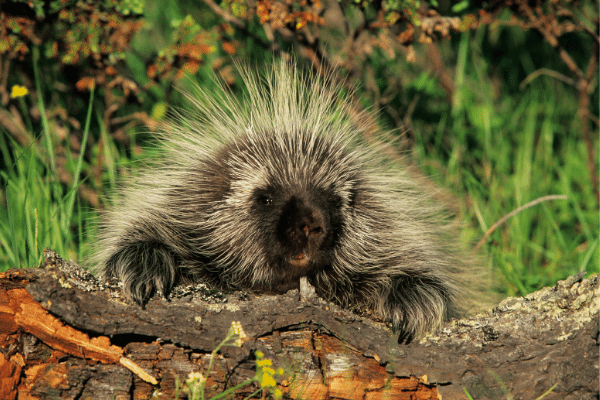
Although they're nocturnal, it's not uncommon to see a porcupine in the daylight.
This poses a significant risk to dogs and other pets.
If your dog encounters a porcupine, they can cause severe damage and sometimes even death with their sharp quills.
If you're experiencing an unwanted porcupine living around your home or in your woods, trapping them is an easy way to control them.
Trapping porcupines is not very hard and a good quality live trap is all you need.
Although you can use oatmeal for a bait, salted apple slices are the best bait to use to trap a porcupine!
Nuisance Trapping Squirrels
Whether they're living in your attic or constantly raiding your bird feeders, trapping squirrels is an easy and effective way to get rid of them.
Early prevention can go a long way when dealing with a squirrel problem.
Start by trimming any low hanging branches near your home.
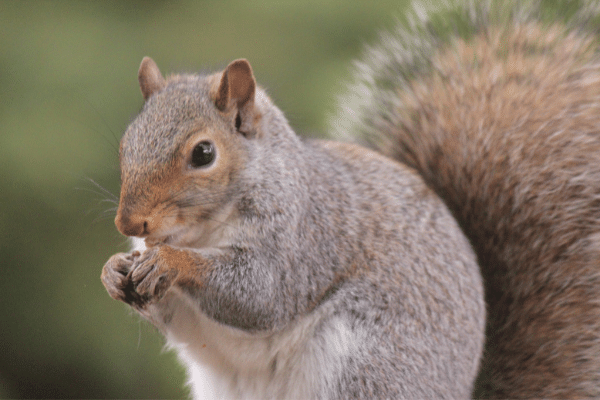
This will reduce the possibility of the squirrels being able to access your roof or soffit where they could potentially enter your house.
Also, move your bird feeder at least 20 feet from your home and place a squirrel barrier around the post to prevent the squirrels from accessing the feeder.
Once you have taken the time to make your yard less inviting to the squirrels, the next step is to set a trap.
A live animal trap works great for trapping squirrels because you have the option of relocating the squirrel after it's trapped.
Simply bait the trap with some peanuts or bird seed and set the trap on solid ground so it does not rock back and forth and you're done!
Nuisance Trapping Skunks
Skunks can live in a variety of different places ranging from a hollow log to under your back deck.
Skunks are nocturnal meaning they are most active after dark, so you generally will not see them during the daylight hours.
You will however see the small cone shaped holes in your yard left behind by the skunk as it digs for grubs and other small insects to eat.
Trapping skunks with a live trap is an easy way to remove them, but many people hesitate on setting a live trap for a skunk because they don't want to get sprayed when they relocate and release it.
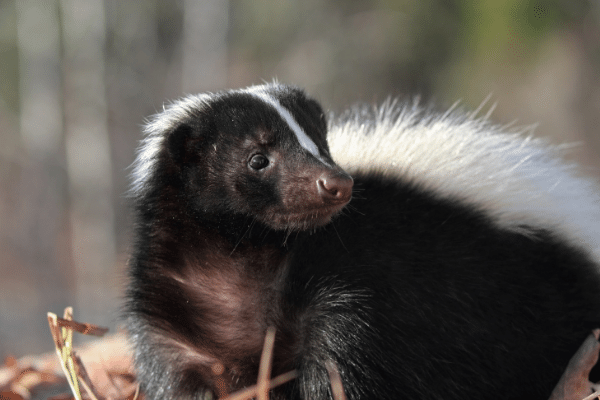
To make things easy, I recommend using a single door live trap and avoid using the two door live traps that have an opening at each end.
With a single door live trap, you can place a blanket over the trapped skunk which will keep the skunk calm and not spray.
Then, you can just open the single door, move away from the trap, and the skunk will walk out.
Nuisance Trapping Wild Hogs
Wild hogs have become a huge problem for much of the United States.
With an ability to thrive in a lot of different environments and few natural predators once they reach maturity, trapping wild hogs is an effective way to control their numbers and reduce the amount of damage they cause to your field or crops.
The three most common traps used for hogs are box traps, cage traps and corral traps.
Box and cage traps work well for small numbers of hogs and can be handled by one person.
Corral traps work better for large populations of wild hogs, but they take a lot longer to set up.
No matter what trap you choose, the trap should be placed in an area where you've seen the hogs or you've found fresh hog activity.
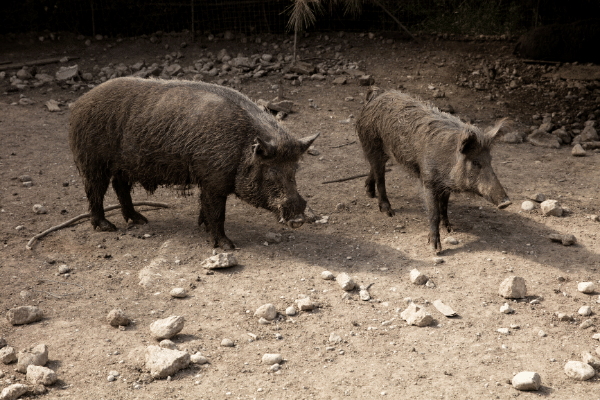
Once you have located a good spot, place some shelled corn around the trap but don't set the trap yet.
Allowing the hogs to feed around the trap will reduce their trap shyness and make catching them easier when the time comes to actually set the trap.
After about two weeks of baiting, the hogs they will become used to the trap and you can set it.
Although two weeks might seem like a long time when you're in a hurry to get rid of the hogs, it's important to remember that feral pigs are very intelligent.
They will avoid your trap if they are spooked by it, which is why allowing them to feed for several weeks is key to successfully trapping the pigs.
After you catch the wild hog you're going to have to deal with it.
It's against the law to relocate a wild hog, so euthanizing them is your only option.
Remember, wild hogs can be very aggressive and dangerous, so use extreme caution when dealing with a trapped hog.
Nuisance Trapping Using Homemade Traps
Depending on the nuisance animal, sometimes you can build an effective homemade trap by simply using a few common household supplies.
These homemade traps often outperform expensive professional traps purchased from the store.
For example, our Homemade Chipmunk Trap is a great way to remove unwanted chipmunks and mice from around your home.
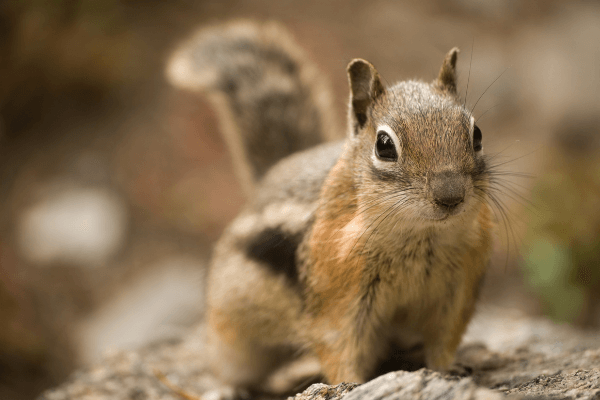
Or if you're looking for a great way to humanely remove squirrels from your home, attic or shed, this article will teach you how to Get Rid Of Squirrels using non-lethal traps.
Overall - Nuisance Trapping
If you're experiencing problems with a nuisance pest or animal, try removing them yourself.
With some basic knowledge and a few simple tools you'll have everything you need to get rid of that annoying pest and best of all.......it's easy!



